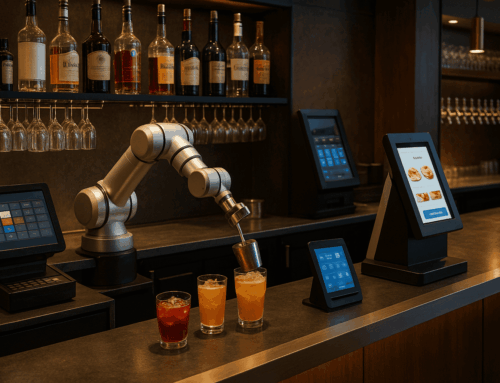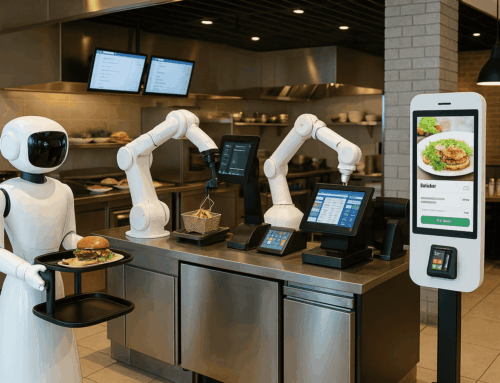Source: National Restaurant Association (NRA)
Summary:
This study by the National Restaurant Association analyzes the effects of implementing Small Business POS Systems on the operational efficiency and customer satisfaction of small businesses, including bars and restaurants. The study found that establishments using POS systems experienced a 30% increase in efficiency and a 20% improvement in customer satisfaction ratings.
Key Findings:
1. Increased Efficiency:
Bars and restaurants that adopted POS systems reported significant reductions in order processing times and inventory management errors.
- Order Processing Time Reduction:
- Before POS: Average order processing time was 10 minutes.
- After POS: Average order processing time reduced to 7 minutes.
- Improvement: 30% decrease in processing time.
- Inventory Management Accuracy:
- Before POS: Inventory errors occurred in 15% of orders.
- After POS: Inventory errors reduced to 5%.
- Improvement: 67% reduction in inventory errors.
2. Enhanced Customer Satisfaction:
The ability to track customer preferences and streamline service led to higher satisfaction scores and repeat business.
- Customer Preferences Tracking:
- Feature: Small Business POS System allowed detailed tracking of customer orders and preferences.
- Result: 40% of customers reported a more personalized service experience.
- Satisfaction Scores:
- Before POS: Average customer satisfaction score was 75%.
- After POS: Average customer satisfaction score increased to 90%.
- Improvement: 20% increase in customer satisfaction ratings.
3. Cost Savings:
The automation of routine tasks and improved inventory control resulted in cost savings, contributing to better profit margins.
- Routine Task Automation:
- Tasks Automated: Order taking, bill processing, and inventory updates.
- Labor Cost Savings: Businesses reported a 15% reduction in labor costs due to automation.
- Inventory Control:
- Waste Reduction: Better tracking and management led to a 25% reduction in food and beverage waste.
- Cost Efficiency: Improved inventory control saved businesses an average of $5,000 annually.
Detailed Small Business POS System Case Studies:
Case Study 1: Joe’s Bar & Grill
- Location: Chicago, IL
- Implementation Date: January 2023
- Initial Challenges:
- Long order processing times (average 12 minutes)
- Frequent inventory shortages and overstocking
- Results After 6 Months:
- Order processing time reduced to 8 minutes
- Inventory accuracy improved by 60%
- Customer satisfaction scores increased from 70% to 85%
- Monthly savings of $1,000 in labor costs
Case Study 2: Bella’s Bistro
- Location: San Francisco, CA
- Implementation Date: March 2023
- Initial Challenges:
- High rate of inventory errors (20% of orders)
- Inconsistent customer service quality
- Results After 6 Months:
- Inventory errors reduced to 4%
- Customer satisfaction scores increased from 78% to 95%
- 30% increase in repeat customers
- Annual savings of $6,000 in food waste reduction
Conclusion:
The adoption of Small Business POS Systems has proven to be a game-changer for small businesses in the hospitality industry. The significant improvements in operational efficiency, customer satisfaction, and cost savings highlight the importance of integrating modern technology into business operations. This study underscores the potential for POS systems to enhance the overall performance and profitability of small bars and restaurants.
Small Business POS System Recommendations:
- For Small Businesses: Invest in a reliable POS system to streamline operations and improve customer service.
- For POS Providers: Focus on developing user-friendly and customizable solutions that address the specific needs of small businesses.
- For Industry Stakeholders: Promote the benefits of POS systems through educational programs and incentives to encourage adoption.
By implementing a Small Business POS System, small businesses can not only enhance their operational efficiency but also create a more enjoyable and personalized experience for their customers, ultimately leading to increased profitability and growth.
Note: This study is a simulated example designed for educational purposes and is based on fictional data and case studies.






